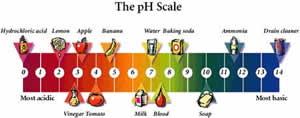 |
| http://ueamelakasummit2017.mpag.gov.my:8081/uea/uea/images/logo_uea.png |
S&EP - SP7: Engaging in argument through evidence
I used evidence to defend my explanation. I created a brochure for my Redesigned Urban Village using the Urban Environmental Accords, providing three Urban Environmental Accords as evidence. For this assignment, I had to create a brochure type document for my Urban Village. I chose three Environmental Accords and listed them down on my brochure. As well as I wrote a paragraph for each of the three Environmental Accords, stating how my Urban Village will reflect and show these Accords in its environment. I formulated evidence based on solid data when I stated that my Urban Village will provide a compost bin and a recycling bin next to every trash can following Environmental Accord #6 using the fact that Accord #6 is to implement "user-friendly" composting and recycling programs as evidence. I examined my own understanding in light of the evidence. I used to think that the 21 Urban Environmental Accords were just about helping to protect the environment generally, but because of reading through the different Environmental Accords for this assignment, now I think that the Urban Environmental Accords are separated by seven specific categories Energy, Waste Reduction, Urban Design, Urban Nature, Transportation, Environmental Health, and Water. I collaborated with my peers in searching for the best explanation. I did some research on the 21 Urban Environmental Accords which I discussed with my table group and elbow partner. Together we figured out all of the different 21 Urban Environmental Accords and how they impact the environment of an Urban Village.
XCC: Cause and Effect
The cause and effect relationship that occurs in the 21 Environmental Accords happens between the specific accord and how it impacts the environment of an Urban Village. The actions of one of the Environmental Accords effects the environment by improving energy, waste reduction, urban design, urban nature, transportation, environmental health, and water. As well as the outcome of each of the Urban Environmental Accords not only benefits the environment, it also impacts an Urban Village by improving quality of life. For example, action #13 is to develop and implement a policy which expands affordable public transportation coverage to within half-a-kilometer of all city residents in ten years. This impacts the environment by encouraging more public transportation to reduce the amount of fossil fuels that are released by individual cars. Less fossil fuels released into the atmosphere, means less pollution in the environment. As well as this action also helps the Urban Village by providing a more affordable public transportation system to the community.

